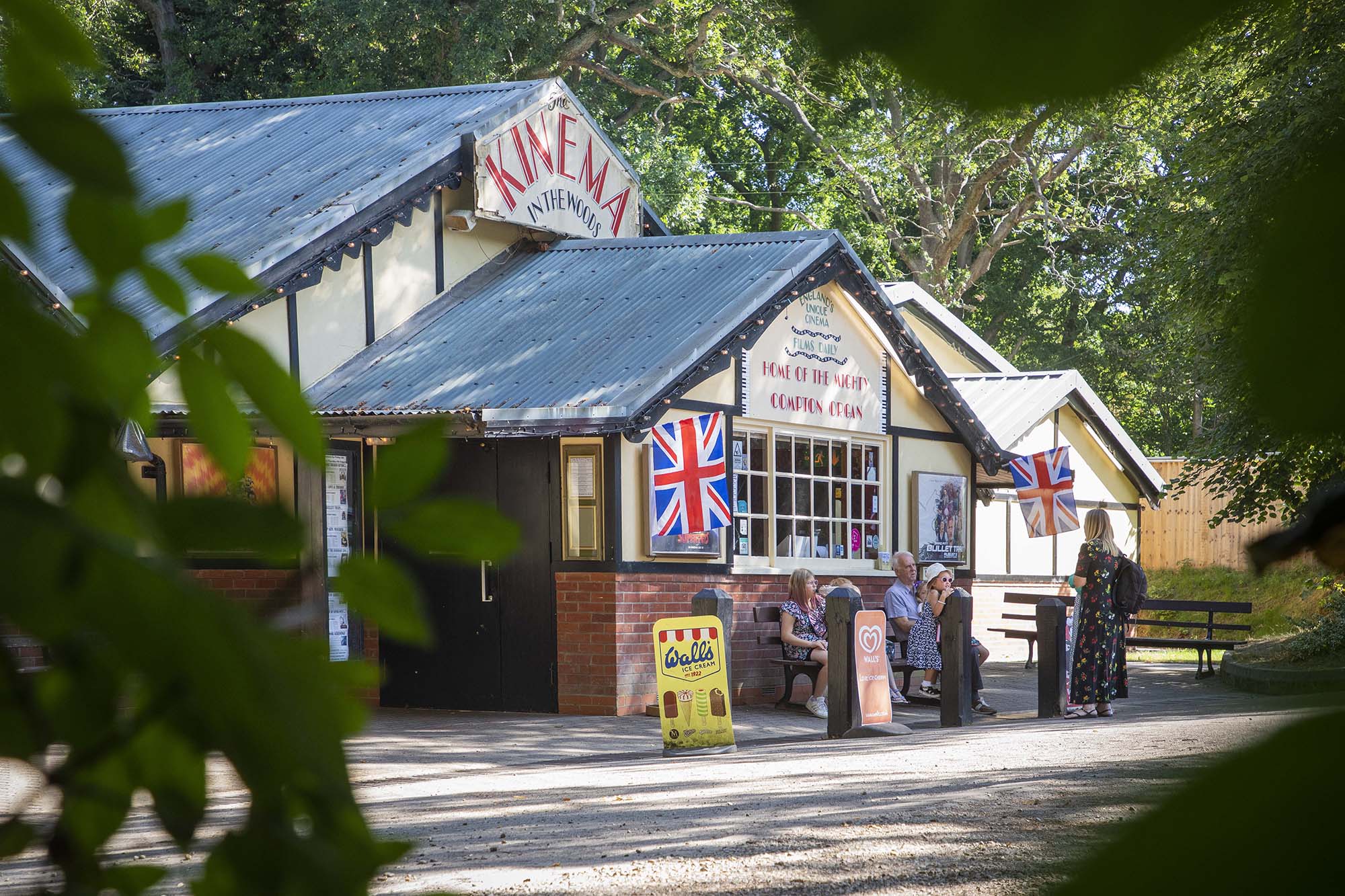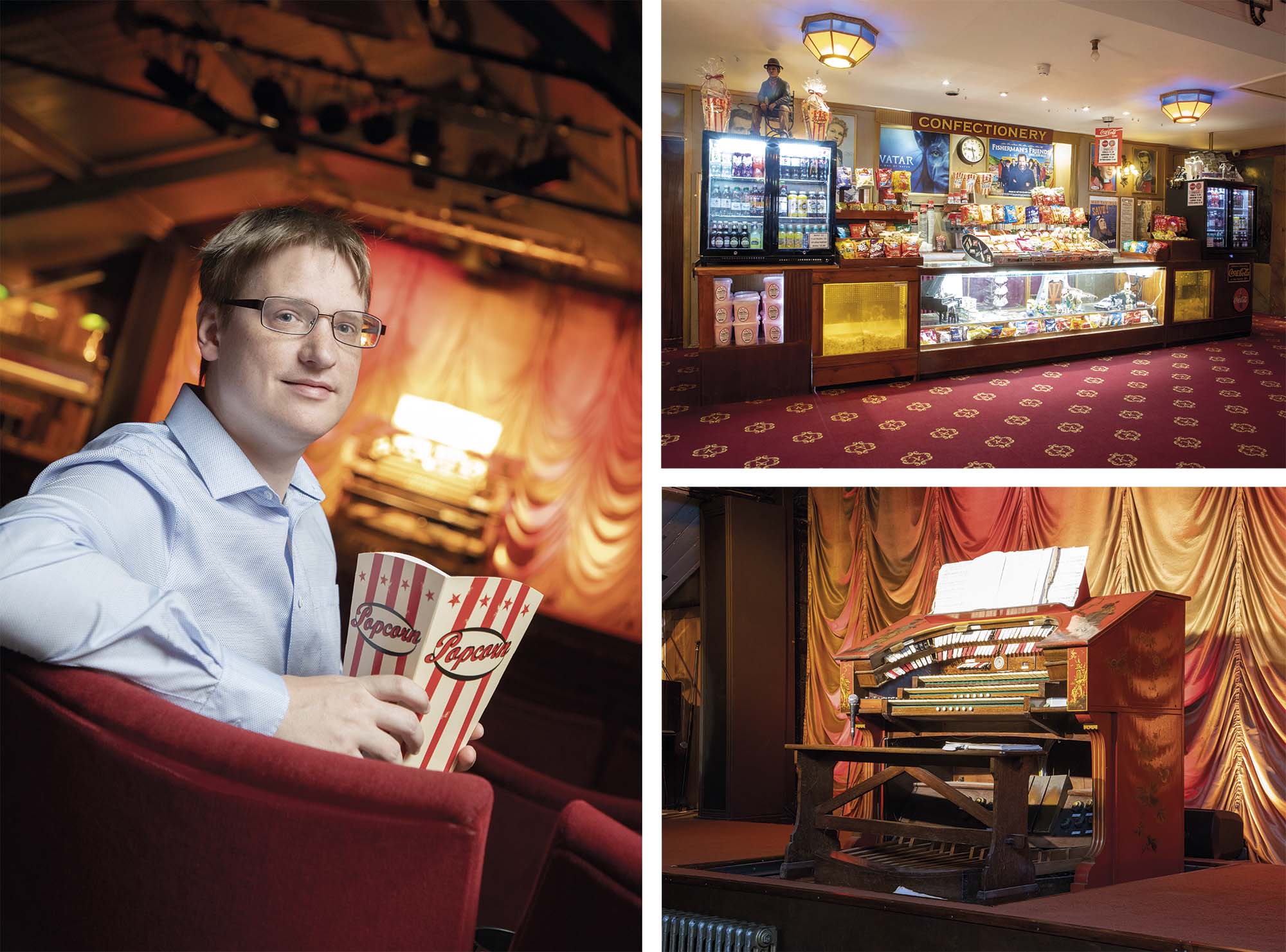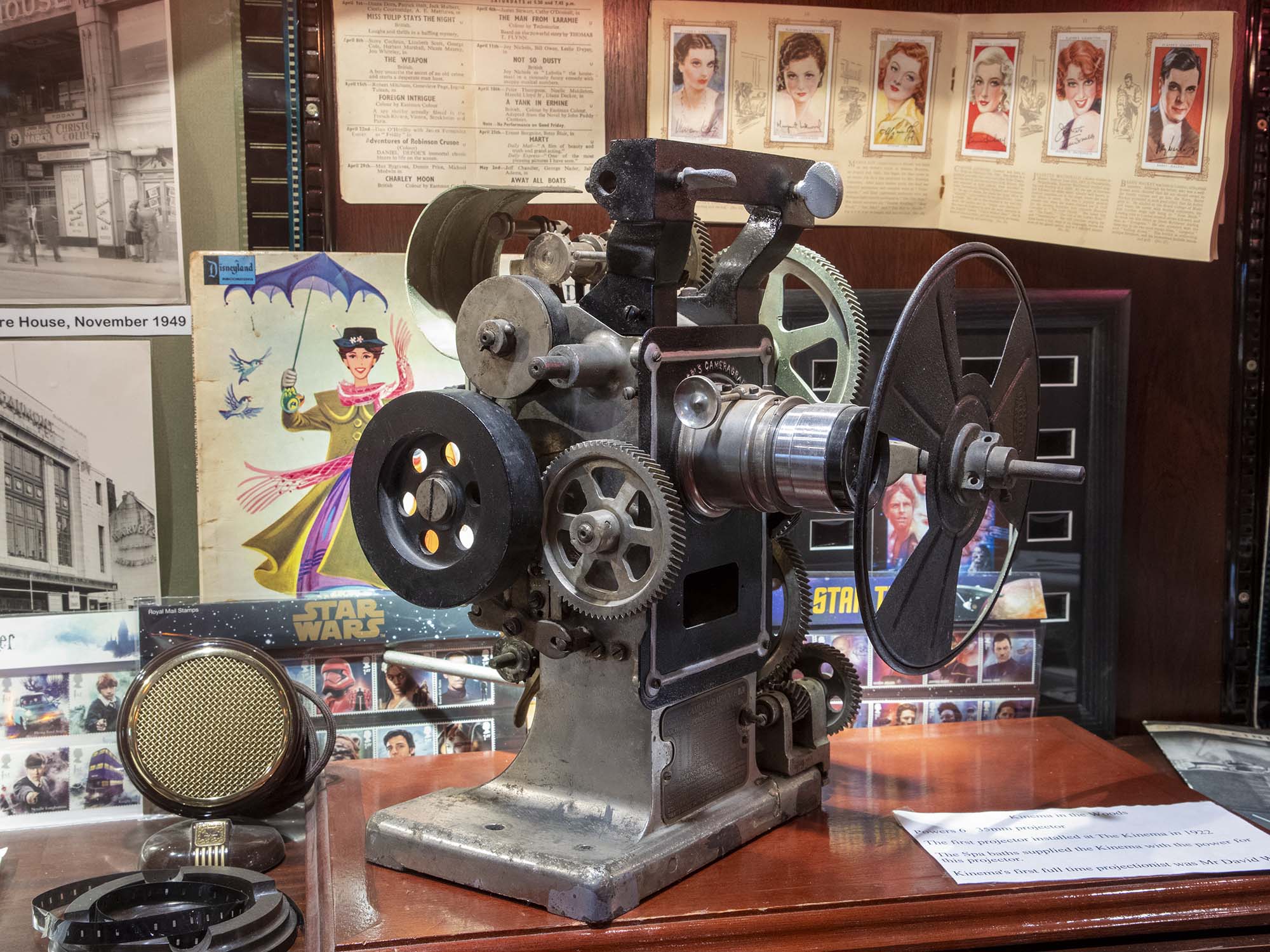What a Cinema this is

The Kinema in the Woods is one of the most appealing and unusual Cinemas in the country if not in the world. It is situated in the beautiful town of Woodhall Spa in mid Lincolnshire.
In it’s 100 years life the Kinema in the Woods has had just three owners/managers; Major Carleton Cole Allport, James Green and now Philip Jones.
In an age of multiplexes, the Kinema is a mere minnow among the big chain ranks, but with four screens and the latest laser projection plus Dolby 7.1 sound in its most recently added screen, it’s technologically right up-to-date. Despite this the cinema retains its charm
The Kinema values its heritage with display cabinets of classic film posters and equipment including its original 1922 projector in the lobby along with devices to splice films.
“It’s a year-round place to enjoy, but rainy days rather than sunny days are better in the summer,” says Philip. “It depends on the film releases, and I ultimately choose what to screen and determine the schedules for the four screens, but we tend to show what we know will be popular from experience.”
The first big release post-Covid was No Time To Die, and that was when the cinema started to be really full again, when it felt like there was light at the end of the tunnel.”

How are films shown at Kinema today?
Thanks to low roof trusses, Kinema remains the country’s only full-time cinema to rely in rear-projection. Opposite is the most modern film projector, which shone film onto a mirror which was when projected 90° onto a screen about 20ft in front of it. Films arrived in reels around 20 mins in duration and the Kinema staff had to manually splice them together and mount them on metre-wide spools which fed the 35mm film into the projector… until the entire industry went digital from 2010-2012.
Today, films arrive in the Kinema’s projection room, via an ordinary broadband internet connection. Commercial quality films are about 150-200 gigabytes in size. Cinemas purchase them from distributors along with a digital key which specifies how many times and on what dates they can be shown. Downloaded a week in advance, staff cue up adverts and trailers, then a computer sends the image to a digital projector, and the audio track via a Dolby 7.1 sound processor to about 20 speakers.
The digital projector’s Xenon bulb is between 2kW and 6kW, lasts 2,000 hours and costs £700 to replace two or three times a year. The Kinema’s newest screen, number four, has a laser projector, which is slightly newer and smaller technology.

Place your comment